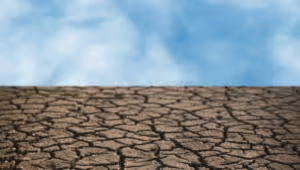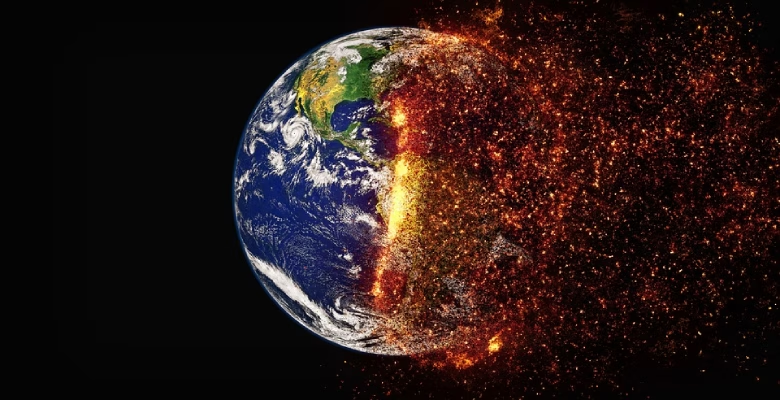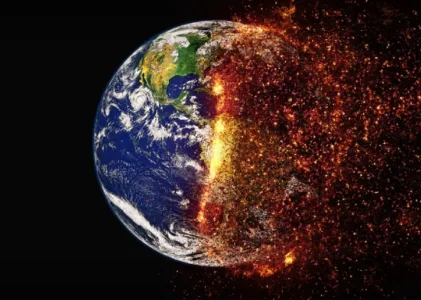Introduction
Climate change is a multifaceted issue impacting every aspect of life, from the air we breathe to the food we consume. The consequences of climate change are already visible, with rising temperatures, melting glaciers, and more frequent natural disasters. However, it’s not too late to take action and prevent further damage. In this article, we’ll explore what climate change is, its causes, and practical steps we can all take to prevent it.
What is Climate Change?
Climate change refers to the changes in the climatic conditions of a given geographical place over a long period of time. The changes can be shifts in temperature, wind patterns and more. These changes are primarily caused by human activities that release greenhouse gases into the atmosphere, trapping heat and causing global temperatures to rise. The most significant contributor to climate change is the burning of fossil fuels, such as coal, oil, and natural gas, for energy and transportation.
Causes of Climate Change
What are some examples of Climate Change?

1. Burning of Fossil Fuels: The burning of fossil fuels for electricity, transportation, and industrial processes releases large amounts of carbon dioxide (CO2) and other greenhouse gases into the atmosphere. These gases trap heat and contribute to global warming.
2. Deforestation: Trees and forests play a crucial role in absorbing carbon dioxide from the atmosphere. However, when forests are cut down or burned, they release the stored carbon back into the atmosphere, exacerbating the greenhouse effect.
3. Agricultural Practices: Certain agricultural practices, such as livestock farming and the use of fertilizers, release significant amounts of methane and nitrous oxide, which are potent greenhouse gases.
4. Industrial Processes: Various industrial processes, including the production of cement, chemicals, and metals, contribute to the release of greenhouse gases and other pollutants.
5. Waste Management: The improper management of waste, particularly in landfills, can lead to the release of methane, a powerful greenhouse gas.
Impacts of Climate Change
What leads to Climate Change?

Impacts of Climate Change(By Pixabay)1. Rising Sea Levels: As glaciers and ice caps melt, sea levels are rising, threatening coastal communities and low-lying areas.
2. Extreme Weather Events: Climate change is increasing the frequency and intensity of extreme weather events, such as hurricanes, droughts, and heat waves.
3. Biodiversity Loss: Changes in temperature and precipitation patterns are disrupting ecosystems and causing the extinction of many plant and animal species.
4. Food and Water Insecurity: Climate change is affecting agricultural production and water availability, leading to food and water insecurity in many regions.
5. Human Health Risks: Rising temperatures, air pollution, and the spread of vector-borne diseases are posing serious risks to human health.
Preventing Climate Change
What Can We Do to Prevent Climate Change?
While climate change is a global issue, we all have a role to play in preventing and mitigating its effects. We Should;
1. Reduce Energy Consumption: Conserve energy by turning off lights and electronics when not in use, adjusting thermostats, and using energy-efficient appliances.
2. Choose Renewable Energy: Transition to renewable energy sources, such as solar, wind, and hydroelectric power, whenever possible.
3. Reduce Waste: Reduce, reuse, and recycle as much as possible to minimize waste and the associated greenhouse gas emissions.
4. Sustainable Transportation: Choose eco-friendly transportation options, such as walking, biking, or using public transportation, and consider purchasing an electric or hybrid vehicle.
5. Eat Sustainably: Adopt a plant-based or low-meat diet, buy locally grown and seasonal produce, and reduce food waste.
6. Support Sustainable Businesses: Choose products and services from companies that prioritize sustainability and have a lower carbon footprint.
7. Plant Trees and Support Reforestation Efforts: Trees are natural carbon sinks, absorbing carbon dioxide from the atmosphere and releasing oxygen.
8. Educate and Advocate: Share knowledge about climate change with others, and advocate for policies and initiatives that support sustainable practices and address climate change.
READ ALSO
Blockchain: Unlocking the Potential of a Revolutionary Technology
Robotics: Our Mechanical Companions in the Journey of Life
Best 3d Printers for Beginners: A comp[rehensive guide
5G and Beyond: Revolutionizing Wireless Technology
Neuroscience Unveiled: Your Brain’s Personal Universe Explained
Frequently Asked Questions (FAQs)
1. What is the greenhouse effect, and how does it contribute to climate change?
The greenhouse effect is a natural process that traps some of the sun’s heat in the Earth’s atmosphere, making the planet warm enough to sustain life. However, human activities, such as burning fossil fuels, release excessive amounts of greenhouse gases, intensifying the greenhouse effect and causing global temperatures to rise.

2. How do I know if a product or service is eco-friendly or sustainable?
Look for certifications like Energy Star, LEED, or Fair Trade, which indicate that the product or service meets specific environmental or sustainable standards. You can also research the company’s sustainability practices and carbon footprint.
3. Can individual actions really make a difference in addressing climate change?
While individual actions may seem small, they can have a significant collective impact. By adopting sustainable practices and making conscious choices, we can reduce our carbon footprint and inspire others to do the same. Additionally, our actions can influence policies and encourage businesses to prioritize sustainability.
4. What is the role of governments and international organizations in preventing climate change?
Governments and international organizations play a crucial role in setting policies, regulations, and initiatives to address climate change. This includes promoting renewable energy, implementing carbon pricing mechanisms, supporting sustainable agriculture, and protecting forests and ecosystems. International cooperation and collaboration are essential to tackle this global issue effectively.
5. How can businesses contribute to preventing climate change?
Businesses can play a significant role in combating climate change by adopting sustainable practices. This includes reducing energy consumption, transitioning to renewable energy sources, minimizing waste, and implementing eco-friendly manufacturing processes. Additionally, businesses can invest in carbon offset projects, support reforestation efforts, and develop products with lower environmental impact. By prioritizing sustainability, businesses not only reduce their carbon footprint but also inspire consumers and other companies to follow suit.
Conclusion
Climate change is a pressing issue that requires collective action from individuals, communities, businesses, and governments. By understanding the causes and impacts of climate change and taking practical steps to reduce our carbon footprint, we can all contribute to a more sustainable future.
References:
1. United Nations Environment Programme (UNEP). (2021). Emissions Gap Report 2021.
2. Intergovernmental Panel on Climate Change (IPCC). (2021). Climate Change 2021: The Physical Science Basis.
3. National Aeronautics and Space Administration (NASA). (2022). Global Climate Change: Vital Signs of the Planet.
4. United Nations Framework Convention on Climate Change (UNFCCC). (2022). The Paris Agreement.
5. World Wildlife Fund (WWF). (2021). Climate Change: Causes, Effects and Solutions. Retrieved From https://www.worldwildlife.org/threats/effects-of-climate-change


